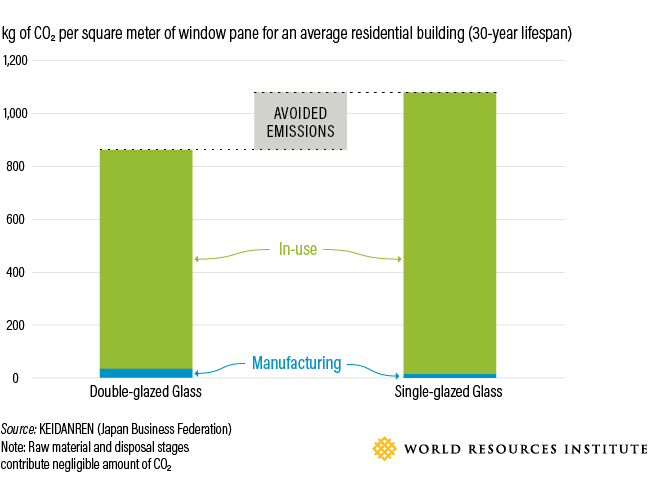
Title
By Stephen Russell and Yelena Akopian - March 12, 2019
Cold-water laundry detergents, fuel-saving tires, energy-efficient ball bearings, emissions-saving data centers. Corporations are increasingly claiming that their goods and services reduce emissions. Thirty-six percent of companies responding to a 2017 survey by CDP claimed they sold products that would help consumers avoid emissions—a 20 percent increase from the year before.
But there is a big problem: These avoided emissions claims are often unverifiable or inaccurate.
WRI conducted a comprehensive review of claims made by more than 300 companies representing a range of sectors and sizes, and found considerable variation and widespread methodological problems in how companies measure and report their avoided emissions. For example, while all the companies we evaluated reported that their products avoided emissions, none of them explicitly considered how their products might increase emissions.
This is bad news for consumers who may be using unreliable information to inform their choices. And it’s even worse news for major companies that are buying components for their products and exposing themselves to possible accusations of greenwashing.
In our new report, Estimating and Reporting the Comparative Emissions Impacts of Products, WRI identifies the biggest weaknesses in current accounting practices and provides recommendations for companies to make credible claims about the climate impacts of their products.
Here are 5 do’s and don’ts that companies should follow:
1. DON’T compare apples and oranges.
It’s first helpful to understand that avoided emissions claims generally fit into three distinct categories. The most straightforward type of claim compares two single products, such as two types of televisions. When choosing a product to compare against, select one that the assessed product is most likely to replace in the marketplace, given expected customer behavior. For example, a TV manufacturer should not compare the life cycle emissions of its latest model to an older model built with outdated technology.

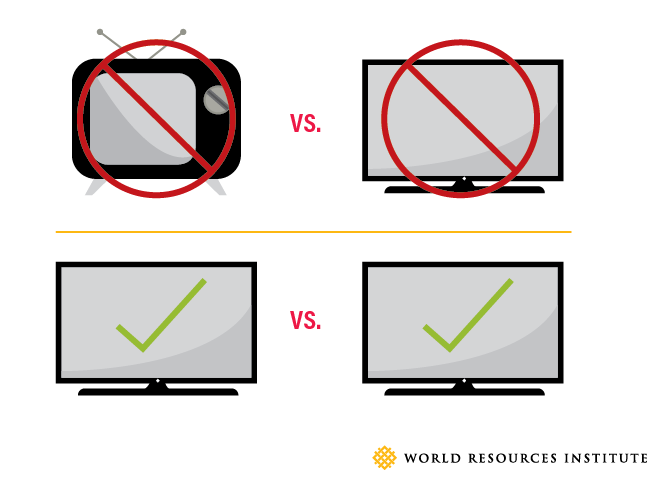
2. DO account for every stage of the product’s life cycle.
Comparative estimates of any two products should account for every stage of their life cycle emissions—from extraction of raw materials, production, processing and shipping, through to product use and end-of-life treatment.
For example, a Japanese company has developed double-glazed insulated glass for residential windows and doors. The company claims that while manufacturing double-glazed glass produces higher emissions compared to single-glazed glass, emissions are reduced during the use phase because the glass allows rooms to stay at comfortable temperatures while using less energy. The company compared the life cycle emissions of both products over a 30-year span, estimating that double-glazed glass panes avoid 217.46 kilograms of Co2 per square meter compared to single-glazed glass.
The GHG Protocol Product Life Cycle Accounting and Reporting Standard provides detailed guidance to understand the full life cycle emissions of a product and focus efforts on the greatest emissions-reduction opportunities.
3. DO consider changes in consumer behavior.
A second type of avoided emissions claim scales the benefits of a single product across the market to calculate total emissions impacts. For example, Braskem, a Brazilian petrochemical company, has developed plastic storage container technology that can substitute the tinplate rigid containers typically used for shipping chocolate drink powder. It calculated that, considering the Brazilian market for chocolate drink powder in 2010, replacing all tinplate containers with plastic containers could reduce total GHG emissions by 10 kilotons.
However, companies should also consider that the use of a product may create ripple effects that then increase or reduce emissions outside of the product’s life cycle. For example, using plastic containers may reduce manufacturing costs; if these cost savings are passed on to the consumer, it may lead to higher sales, which cancel out some or all of the emissions benefits of plastic containers.
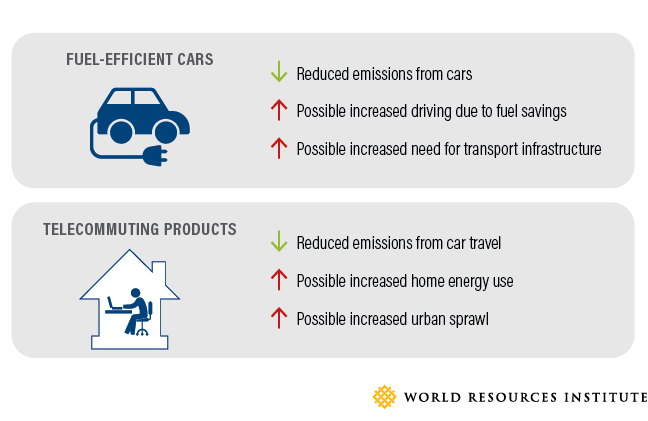
Companies can use the GHG Protocol Policy and Action Standard, which recommends they consider how the assessed product will change emissions in the real world. Companies should transparently state these real-world considerations and, when feasible, incorporate them into their calculations of avoided emissions.
4. DON’T confuse market size with impact.
To calculate a product’s overall emissions-reduction impact in the marketplace, companies will frequently multiply one product’s impact by the estimated number of final products in use. However, this ignores the fact that emissions are only avoided if the low-emission product is used in place of the reference product.
For example, a new line of energy-efficient tablets may have lower life cycle emissions compared to a desktop computer. But if consumers are not using their new tablets to replace their less-efficient desktops, but instead using both products, the product is not avoiding emissions.
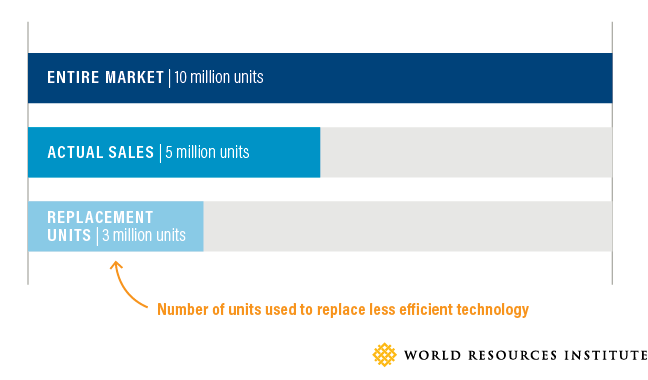
Companies should, when possible, use actual sales numbers and reflect only the number of products estimated to replace existing or future stock. The emissions impact per unit should be reported separately from results at the market level.
5. DON’T cherry pick.
A third type of avoided emissions claim aggregates comparisons of multiple products, such as a company’s entire line of low-carbon products. When choosing products to assess, don’t limit analyses to products that are known or expected to reduce emissions. Analyses that aggregate results at the portfolio-level should represent the company’s full product portfolio, rather than a subset of products known or expected to have a positive impact.
For example, AT&T set a goal to save 10 times the amount of carbon generated by their operations by 2025. Credibly tracking progress against such a goal would require that the company consider both the negative and positive impacts of all the products in their portfolio. Projects to promote energy-efficiency in buildings and farms may avoid emissions; on the other hand, phone plans that encourage users to replace their smartphone every two years can increase them.
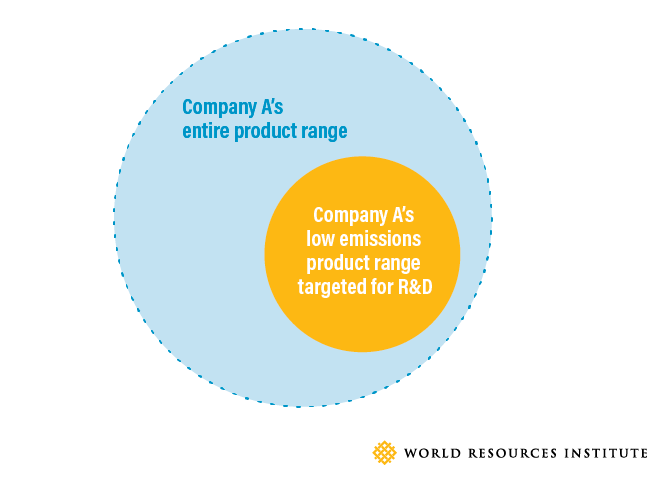
The Golden Rule: Always Be Transparent
Most claims we analyzed lack the information needed to assess their credibility. Companies need to provide clear and complete information on how they calculated avoided emissions and what product or range of products they used for comparison. They should always report a complete corporate value chain inventory, including scope 1, scope 2, and scope 3 emissions. Unlike comparative impact assessments, this is a well-established practice and can reliably measure whether a company’s emissions are increasing or decreasing.
By following the Golden Rule and 5 Do’s and Don’ts, companies can improve the credibility of their claims, avoid tarnishing their brand with accusations of greenwashing, boost customer confidence and better inform internal decision-making. And most importantly for us all, they can play a key role in curbing emissions and fighting climate change.
